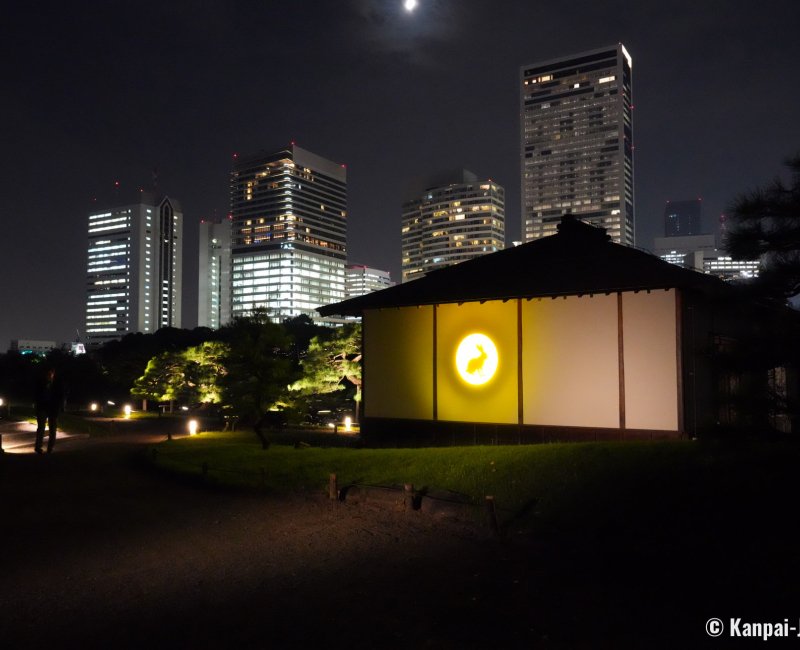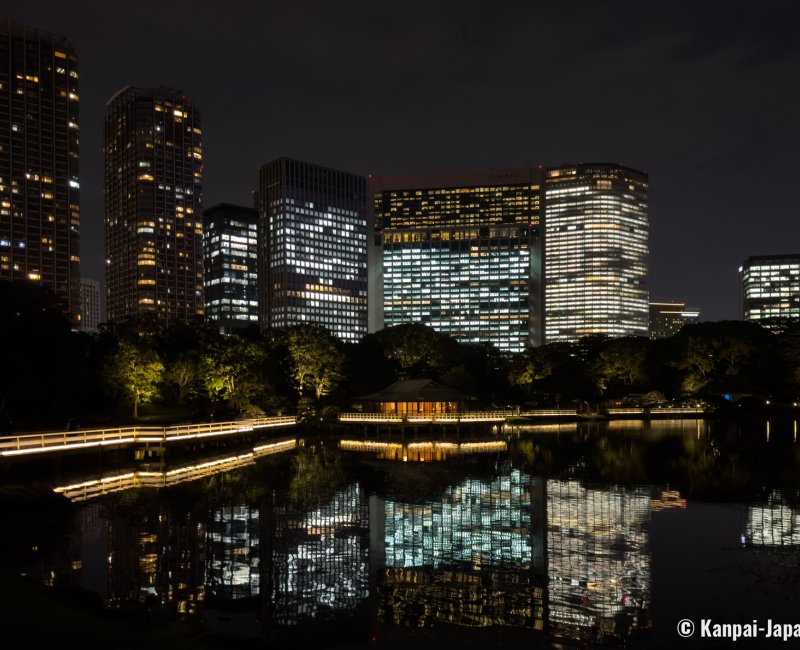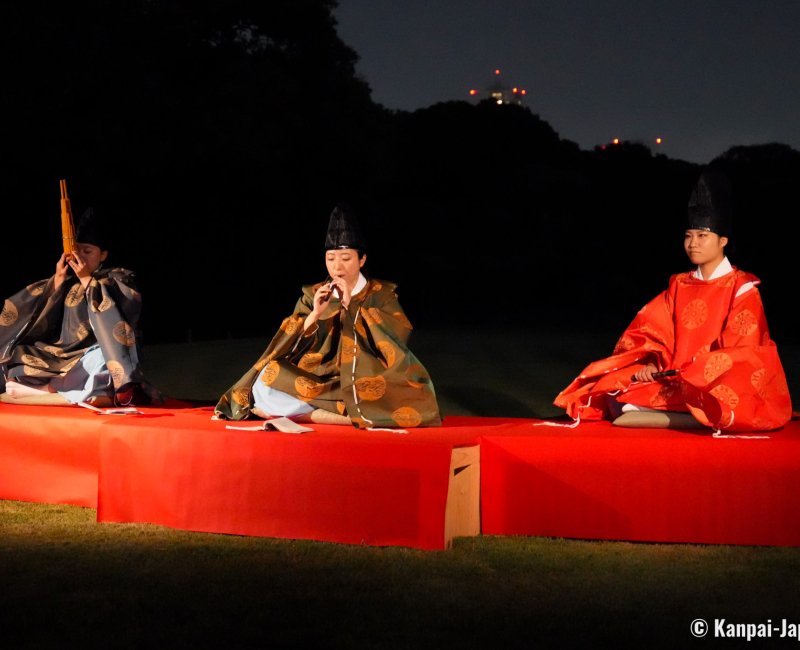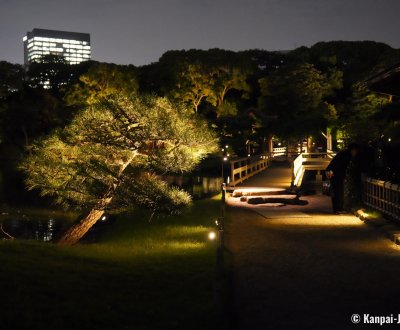Hamarikyu Tsukimi Sanpo
🎑 Walking Under the Autumnal Full-moon
Hamarikyu Tsukimi Sanpo is a seasonal night event for the autumn moon-viewing tradition taking place at Hama-Rikyu, a Japanese garden located at the mouth of the Sumida-gawa river, in Tokyo Bay in Japan. Hama-Rikyu’s visitors follow illuminations in the dark to (re-) discover the myths and rituals of a Tsukimi harvest moon-watching party.
Called o-tsukimi (お月見) in Japanese, moon-viewing is one of the traditions of the Mid-Autumn Festival (chushu setsu), a celebration following the former luni-solar calendar and taking place between September and October to honor fall harvests.
At this time of the year, the Japanese enjoy watching the full-moon 🌕 on 2 occasions:
- The 1rst takes place during the night of the 15th day of the 8th month and is called jugoya (十五夜) or imo meigetsu 芋名月 meaning the "root / sweet potato moon 🍠," a nickname based on the vegetables harvested at this time of the year;
- The 2nd full moon happens about 1 month later, during the night of the 13th day of the 9th month and is called jusanya (十 三 夜) or kuri meigetsu (栗名月), which means "chestnut moon 🌰".
The nightly event called "Hamarikyu Tsukimi Sanpo" is set on this 2nd occasion of contemplating the autumnal full moon and has been held at Hama-Rikyu for a couple of years now. This Japanese garden in Tokyo opens until 9 p.m. over a few evenings for a special "moon-watching stroll in Hamarikyu."

Exceptional nightly visit of the garden
The nightly stroll in Hama-Rikyu starts at the main Otemon gate, where a splendid 300 years old pine tree is standing illuminated by spotlights. It is the oldest pine tree of the Kanto area, and it was planted to honor the 6th shogun of the Tokugawa dynasty. The garden’s other numerous Japanese pine trees also benefit from a beautiful light-up. On the ground, a video mapping recreates the movements of the sea to remind of the place’s singularity: it is indeed located on the shore of Tokyo bay, and its main pond, Shioiri-no-ike, is filled with sea water as tides fluctuate.
The walk continues on the rectilinear alley leading to Shioiri-no-ike, the highlight of the visit, where are gathered the installations for the tsukimi moon-viewing festival. A play with lighting and smokes builds up a mystical atmosphere of a hazy garden, making for a pleasant walk in a place that is both natural and spiritual, with Shiodome business district in the background.

Shinto ceremonies to celebrate o-Tsukimi
Beside the pond, visitors look up to the sky and watch the harvest moon that is also reflected on the water on a clear weather night. 3 tea pavilions are lit-up on the theme of the contemplation of the full moon, like so:
- Tsubame-no-Ochaya is adorned with a golden moon featuring the silhouette of a rabbit at its center;
- Matsu-no-Ochaya is lit-up with a blue moon; and,
- Nakajima-no-Ochaya, located in the center of the pond, welcomes visitors under the moonlight for a cup of matcha or nihonshu paired with a wagashi traditional sweet.
A Shinto ceremony, of about 20 minutes long, also takes place 3 times per evening: at 6, 7 and 8 p.m. A group of Shinto priests chant prayers accompanied by traditional instruments such as the flute as they arrive on a boat and move up to a small platform.

Nearby, a beautiful altar displaying Tsukimi offerings is set up in the outdoor and with a particularly well done light-up. The symbolic gifts are:
- A pyramid of 13 white dango dumplings;
- A bouquet of susuki pampa grass;
- A selection of fall fruits and vegetables such as chestnuts, nashi pears, persimmons, sweet potatoes, aubergines and various squashes.
The event Hamarikyu Tsukimi Sanpo succeeds in creating a night stroll experience under the light of the harvest moon, whether the celestial body in plain sight or hidden by clouds. It offers an occasion to (re-) discover Shinto rituals in connection with this traditional moon-viewing festival, celebrated each year by the Japanese. Note that a few seasonal events are also held at the garden in the daytime.


